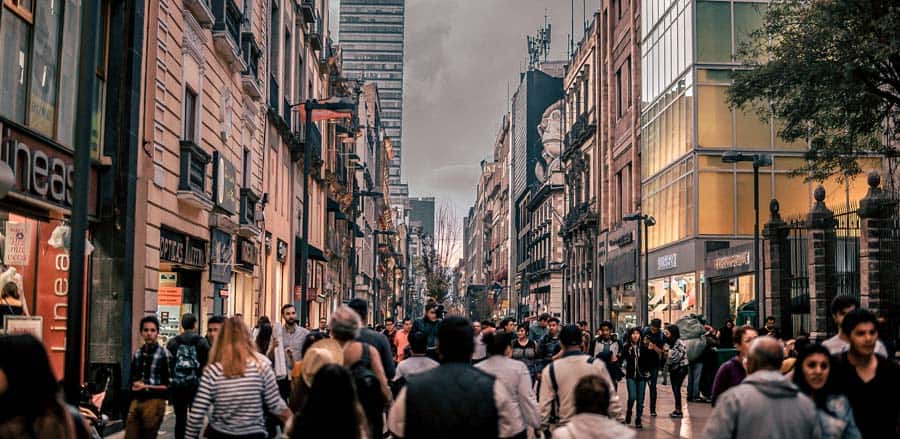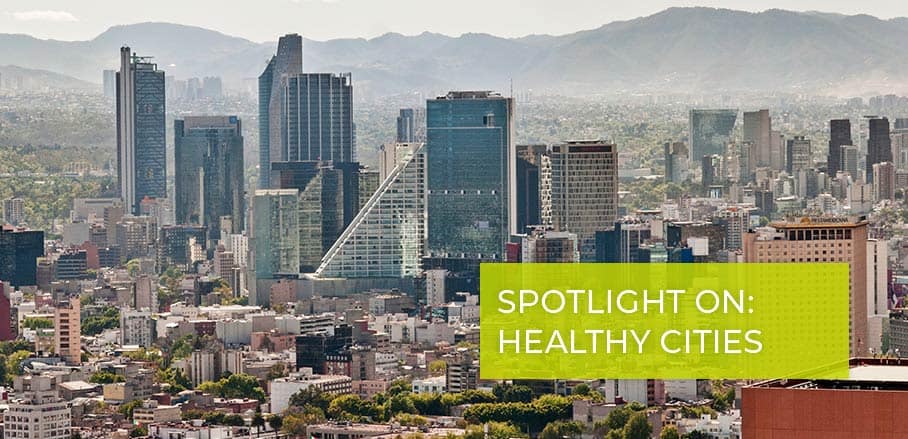Restoring our Sound Equilibrium: Fighting Noise Pollution in Mexico City
Noise is one of the top environmental hazards. Facing ever-growing cities, one wonders: is there anything we can do? Yes, there is. Jimena de Gortari Ludlow, expert in urban acoustics, examines the unique soundscape of the world’s fifth largest city and offers practical solutions.
To be an inhabitant of Mexico City means to be exposed to a soundscape that surpasses the regular norm in every imaginable way: the “musical” horns of buses and trains; cars which are virtual traveling discos; drivers who think the best way for speeding up traffic is the indiscriminate use of their horns; trash collectors who musicalise their job of separating trash at full volume; noise from street stands that vie for attention with speakers and giant mascots; raucous crowds at the many events in public plazas and parks; the peddler of tamales or the one collecting old pots and pans, together with the whistles of knife grinders and bells of ice cream vendors; and let’s not forget the low-flying airplanes and helicopters above our heads.
And that is just public spaces. Private spaces are not free of annoying sounds, either. Many residents have trouble sleeping because of noise pollution caused by bars and other night-time establishments in which the country’s many public holidays are celebrated with fireworks and fairs. Equally disturbing to neighbourhood tranquillity are private party goers, raising the volume of the music and their voices, as if they were desperately trying to overcome the surrounding racket.
Noise: Common Complaint but Underrated Threat
Indeed, Mexico’s capital is characterised by a wide spectrum of different sounds and noises. It is thus not surprising that noise pollution has consistently been the second most common complaint filed with Mexico City’s Environment and Zoning Prosecutor’s Office (PAOT) after land use violations. Citizens may be aware of noise pollution itself, but how conscious are we of the noise in the city, and to what extent do we believe it is just a common and unavoidable side-effect to living in a megalopolis?
While citizens have become more and more environmentally conscious, we still do not fully grasp the effects noise has on our bodies – unlike the consequences of air pollution that show up on a white cloth left on the balcony. Noise does not have an immediate negative impact on our health; the danger lies in the slowly accumulating effects that remain barely perceivable until they become irreversible. According to the World Health Organization (WHO) noise is even the second most important environmental threat to people’s health.
After all, long-term exposure to noise has been shown to cause a range of health problems, including negative effects on the cardiovascular and metabolic system, high stress levels, tinnitus, hearing loss, sleep disturbances, annoyance, as well as cognitive impairment in children, and other harmful and disturbing effects. Noise exposure effects have even been found in animals.

The hustle and bustle in downtown Mexico City © piqsels.com
Immediate Action: #TodosSomosResponsables
Noise, the “invisible evil”, has been overlooked by local authorities for far too long. While there are local and federal norms, there are few plans of action for improving the situation. The matter of noise does not appear in public policy nor in plans of urban development. In political speeches, which promise a more humane city for all, there is talk of air and water pollution, and of solid waste, but noise is never considered a pollutant that requires immediate measures of mitigation and prevention.
At present there are many campaigns via social networks as well as complaints to PAOT. This signifies a positive development, which we need to build upon. We must return to Article 4 of the Mexican Constitution which states that “each person has the right to a healthy environment for his or her development and well-being. The State shall assure that right is respected. Environmental damage and degradation shall generate legal responsibility for the party causing the damage in keeping with the terms laid down by the law.”
To achieve this goal, I propose the creation of a “Decalogue against Noise” which demands compliance with #DerechoAlSilencio (#TheRighttoSilence ) and the #DerechoAlDescanso (#TheRighttoRest). It is of utmost importance to understand that the phenomenon of noise in the city is a problem we all face – and all contribute to. The Decalogue should thus be understood as part of citizens’ basic rights and duties, since enjoying the right to silence and rest is the responsibility of everyone.
#DecálogoContraElRuido: The Ten Noise Commandments
#NoMoreNoise
Promote changes in social practices. Carrying out socio-cultural activities and interactions in a way that does not disturb others significantly is essential and in line with the recommendations of the WHO.
#SoundEducation
Promote knowledge and awareness in society. We need to remember how to listen and learn to evaluate different sound environments by paying close attention to our surroundings.
#NoiseOnTheAgenda
Take on the task of environmental control of noise pollution. Government institutions have ignored the problem for far too long. Their responses have been insufficient and unsatisfactory. We need to tackle the lack of follow-up and coordination by relevant institutions.
#PreventiveCity
Understand that noise is cross-sectional in any decision concerning urban planning. Urban designing should take into account that noise, while invisible, must be taken into consideration because every new city design, plan or program has repercussions in terms of sound and noise creation.
#UrbanHealth
Incorporate the impact on health in decisions of urban matters. Think about the city and the impact it has on health, with the understanding that health includes physical, mental and emotional well-being.
#PAOTpractices
Promote the creation of environmental policies as a public service for inspecting and controlling noise. Acknowledge the undisputed importance of complaints, follow-up and monitoring related to PAOT matters on sound. Collaborate on these matters accordingly and establish leadership.
#CitizenParticipation
Promote round tables and forums for citizen participation for managing social conflicts stemming from excess noise of commercial establishments, religious and/or parochial festivities. This is essential to restructuring the social fabric in a way in which everyone is heard based on their voice and not its volume.
#BuildingCodeNoise
Promote the elaboration and/or modification of the Mexico City Building Code based on laws related to noise. We need a building code that includes regulations and laws on matters of noise in order to comply with the recommendations of the WHO. We must also develop “neighbourhood maps of noise”, mapping the type and amount of noise residents are exposed to at the local level. It is necessary to make these maps public, so citizens know the level of exposition to noise in advance.
#NoiseRegulation
Incorporate noise sources in the official regulations, which are currently not taken into account: traffic, peddling, public spaces, communities (parties, pets, etc), religious festivities, construction projects. Many complaints are based on noise that is caused by sources currently not included in the existing norms. It is recommended to create expert teams for regulating and ruling on noise sources.
#Wellbeing
Promote studies on environmental noise and its effects on society. It is important to invest into noise and sound research, seeking interdisciplinary work and creating proposals on various levels. Results must be published and made available to all.
